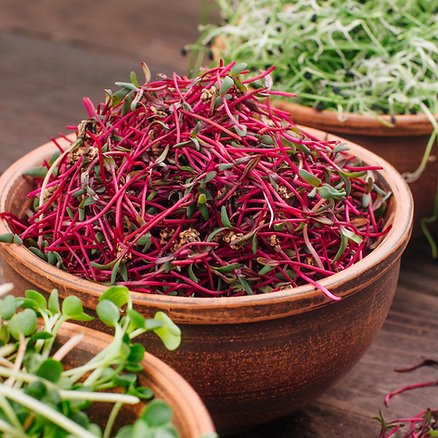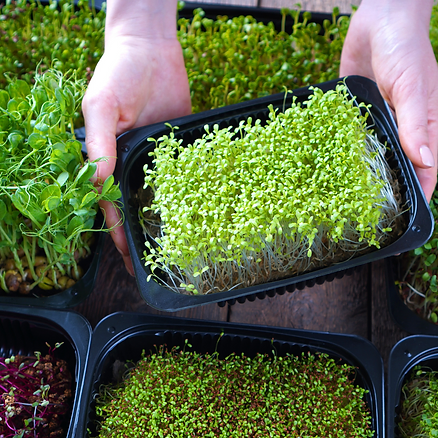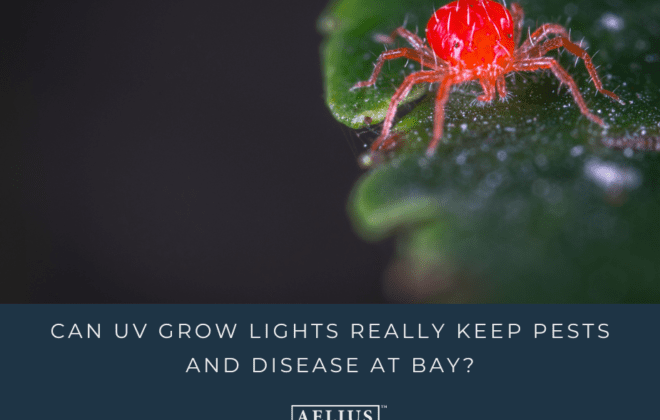Maximizing Growth without Impacting Quality


The Benefit of Adding Far Red to your Microgreen Operation
Microgreens continue to be one of the top growth markets in horticulture, with a compound annual growth rate of 7.67%. These younger forms of produce are sought out by chefs and consumers alike for their nutrient density and rich colour profile. One of the most appealing features of these crops is their fast turnaround. The average edible crop can be harvested within two to three weeks and require minimal inputs, making microgreens an extremely profitable sector of horticulture to tap into.
Because of their small size, less than two to three inches, microgreens thrive in vertical growing environments, creating the opportunity for growers to transform virtually any space into a profitable business. Advances in LED lighting have paved the way for this type of close quarter growing, ensuring healthy, quality growth, in small spaces.
Incorporating LEDs as the primary source of lighting, offers several benefits for vertical operations, including less heat, energy savings, and increased productivity. These lights are typically used between 12 to 18 hours a day, to replicate natural sunlight and an additional 4 to 6 hours for supplemental lighting.
When it comes to growing microgreens, three things are essential:

-
Producing quality plants (delicious and nutritious)
-
Quick turnaround
-
A viable market (chefs, grocers, or direct to consumer)
Lighting plays an essential role in helping achieve these goals.
What is the best LED for this type of crop?
To answer the question, growers need to understand the role that each spectrum plays in growing. Typically, microgreens are grown under red and blue light-emitting diodes. Both these spectrums are absorbed by the leaves and are, in turn, used for photosynthesis.
One of the benefits of microgreens is their diversity. As a grower, you can choose to specialize your operation or diversify; including a variety of fast-growing vegetables, slow-growing vegetables, and herbs.
So, what spectrum is the best?
Well, when it comes to microgreens- it’s all about balance.
Researchers Ying and Chase found that increasing the blue light proportion to 20% will
- Increase gene expression of the plant
- Increase extractable antioxidant concentrations


This is particularly important in operations where growers will be mechanically harvesting the plants.
Nighttime Lighting and Height
Researchers Ying and Kong investigated the role that nighttime treatments of monochromatic blue light and blue light with Far Red had on the overall growth of microgreens. They discovered that blue light on its own increased plant height by 34% (for mustard) and 18% (for arugula). However, when these plants were treated with the combination of blue light and far red, the height of the plants increased by an additional 6% (for mustard) and 15% (for arugula). Longer photoperiods, between 15-20 hours of light, after the germination period, have also been attributed to improving the taste of microgreens.
This study holds a lot of promise for growers, and the way that we look at nighttime lighting.
The path to success begins with the right light recipe
Choosing the right light recipe is vital for the healthy growth and yield of your microgreens. When it comes to the highly competitive market of microgreens, having the best equipment for your production is vital. Aelius’s 5000k +660 +730 tube lights were designed with these unique production challenges in mind. These lights are specifically manufactured to provide plants with the light spectrum and the intensity that they need to thrive.
Whether you are upgrading your existing indoor farm or entering into the hot microgreens marketplace, equipping your facility with LEDs with additional far-red diodes will help give your crop that extra boost that it needs to increase yield and productivity.


Contact us for more details on our Aelius 20W LED tube series and other greenhouse products.




